ASX Glossary - K
Jump to navigation
Jump to search

| Click on term for full definition | Click here to report corrections and content addition requests |
| Ka-Band Doppler Radar | Ka-band Doppler radar is used in weather tracking, wind shear detection, and aviation research. It provides highly detailed atmospheric data, allowing pilots and meteorologists to anticipate turbulence, storms, and hazardous flying conditions. |  |
| Ka-Band Radar | Ka-band radar operates at high-frequency microwave wavelengths, commonly used in weather detection, terrain mapping, and aircraft surveillance. It offers high-resolution imaging and precise target tracking, making it valuable for advanced avionics systems, synthetic aperture radar (SAR), and satellite communications in modern aviation technology. | 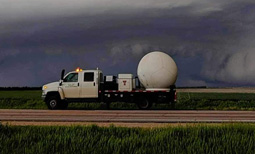 |
| Ka-Band Satcom (Satellite Communications) | Ka-band satellite communications provide high-speed data connectivity for aircraft, enabling in-flight internet access, weather updates, and navigation enhancements. Airlines and military operations use Ka-band Satcom for improved passenger services and real-time flight data transmission. |  |
| Kármán Line (Edge of Space) | The Kármán Line, located at an altitude of 100 km (62 miles) above sea level, marks the boundary between Earth's atmosphere and outer space. It serves as the internationally recognized threshold for defining space travel and aerospace flight. |  |
| Keep Out Zone (KOZ) in Airports | A Keep Out Zone is a restricted area within an airport or airspace where unauthorized aircraft or personnel are prohibited. KOZs exist around runways, control towers, and military installations to maintain security and safety. |  |
| Kelvin Temperature Scale (Aviation Applications) | The Kelvin scale is a thermodynamic temperature measurement system used in aviation meteorology and engineering. It is essential for calculating engine performance, fuel efficiency, and atmospheric conditions. Unlike Celsius or Fahrenheit, Kelvin starts at absolute zero, the point where molecular motion ceases. | 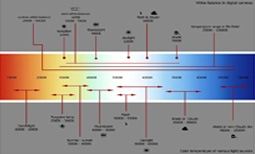 |
| Kerosene-Based Jet Fuel | Most jet fuels, including Jet A and Jet A-1, are kerosene-based, offering high energy content and stability for turbine engines. Kerosene’s low freezing point and efficient combustion make it ideal for high-altitude operations, ensuring reliable performance under extreme temperature conditions. | 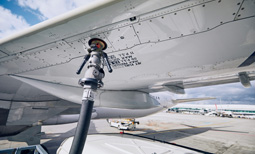 |
| Kevlar in Aviation | Kevlar is a high-strength, lightweight fiber used in aircraft construction, primarily for composite materials, body armor, and reinforced cockpit doors. Its resistance to heat and impact makes it ideal for enhancing aircraft safety and structural durability. |  |
| Key Performance Indicator (KPI) in Aviation | KPIs are measurable data points used to evaluate aviation operations, including fuel efficiency, on-time performance, maintenance turnaround, and safety compliance. Airlines and regulators use KPIs to improve operational effectiveness and ensure industry standards are met. |  |
| Keyhole Slot (Aircraft Design) | A keyhole slot is a structural design feature found in aircraft components, allowing for secure fastener placement and load distribution. These slots improve maintenance accessibility, prevent metal fatigue, and ensure structural integrity in high-stress areas such as fuselage joints and wing connections. |  |
| Kickback (Jet Engine Thrust Reversal) | Kickback occurs when a jet engine's thrust reverser deploys improperly, causing unintended backward thrust. This can result in aircraft instability during landing or taxiing. Proper maintenance and pilot awareness prevent dangerous kickback incidents. |  |
| Kill Ratio (Military Aviation) | Kill ratio refers to the number of enemy aircraft downed compared to losses suffered. It is a critical metric in military aviation, used to assess fighter jet effectiveness and combat performance. |  |
| Kill Switch (Aircraft Security Feature) | A kill switch is a security mechanism designed to shut down aircraft systems in emergencies, such as hijackings or electrical malfunctions. Military and high-security aircraft use kill switches to disable avionics, engines, or fuel systems when necessary. |  |
| Kilohertz (kHz) in Aviation Communication | Kilohertz (kHz) is a frequency unit used in aviation radio communication, primarily for VHF and HF transmissions. It ensures reliable pilot-to-air traffic control (ATC) communication and long-distance navigation. |  |
| Kilopascal (kPa) in Aviation | The kilopascal (kPa) is a metric unit of pressure measurement used in aviation for engine thrust calculations, cabin pressurization, and meteorological data. It helps determine atmospheric conditions at different altitudes, affecting aircraft performance, fuel burn rates, and flight planning. | 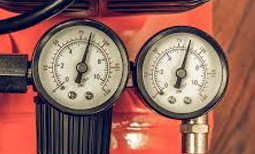 |
| Kinetic Energy in Aircraft Motion | Kinetic energy plays a crucial role in aircraft takeoff, flight, and landing. It is the energy an aircraft possesses due to its motion. Understanding kinetic energy is vital for calculating takeoff speeds, braking distances, and emergency landing scenarios. | 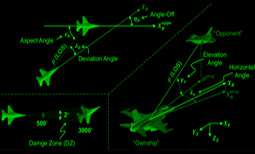 |
| Kinetic Heating (Re-Entry and High-Speed Flight) | Kinetic heating occurs when an aircraft or spacecraft moves at high speeds, generating intense friction with the atmosphere. This effect is crucial for hypersonic vehicles, requiring heat-resistant materials to prevent structural damage during re-entry or supersonic flight. | 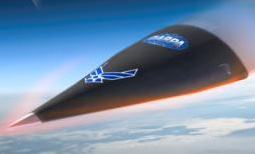 |
| Kinetic Turbulence (Wake Vortex Effects) | Kinetic turbulence is caused by the wake vortices of large aircraft, creating unstable airflow patterns. It poses risks to following aircraft, requiring proper separation distances to prevent loss of control. |  |
| Kit Aircraft | A kit aircraft is a small, often experimental plane sold as a self-assembly package. Enthusiasts and private pilots build kit aircraft for personal use, testing aerodynamics, engineering skills, and cost-effective flying solutions. | 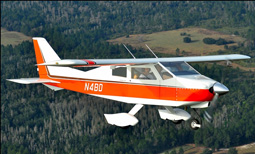 |
| Kitchen Galley (Aircraft Catering Area) | The kitchen galley is the onboard catering facility in passenger aircraft where flight attendants prepare and store meals. It includes ovens, refrigeration, and secured storage to accommodate in-flight service needs. | 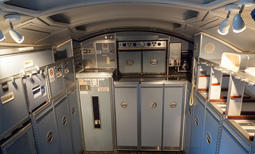 |
| Klystron Tube (Radar and Avionics Use) | A klystron tube is a specialized vacuum tube used in radar and radio frequency systems for aircraft navigation and surveillance. It amplifies microwave signals, enhancing radar performance for air traffic control and military applications. | 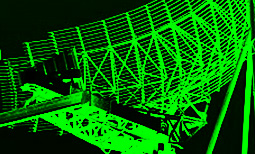 |
| Knee Pad Checklist (Pilot Reference Guide) | A knee pad checklist is a compact reference guide strapped to a pilot’s leg, containing crucial flight procedures, emergency actions, and navigation data. It provides quick access to essential information without requiring pilots to look away from the controls. |  |
| Knowledge-Based Training (Aviation Education) | Knowledge-based training focuses on theoretical instruction in pilot education, covering aerodynamics, meteorology, regulations, and systems management. It complements hands-on flight training to ensure pilots are well-prepared for real-world aviation scenarios. |  |
| Knock Sensor (Piston Engine Aircraft) | A knock sensor detects abnormal combustion (engine knocking) in piston-engine aircraft. It helps pilots and maintenance crews identify fuel or timing issues before they lead to engine damage. |  |
| Knot (Nautical Mile Per Hour) | A knot is a unit of speed used in aviation and maritime navigation, equal to one nautical mile per hour (1.852 km/h or 1.151 mph). It is the standard measurement for airspeeds, wind speeds, and flight navigation, ensuring consistency in global aviation operations. |  |
| Knot-to-Mach Conversion (Airspeed Calculations) | Pilots and engineers use knot-to-Mach conversion charts to determine an aircraft’s speed relative to the speed of sound. This conversion is vital for high-speed flight operations, especially in supersonic and hypersonic aviation. |  |
| Kollsman Window (Altimeter Adjustment) | The Kollsman window is a calibration dial on an aircraft’s altimeter that allows pilots to adjust for barometric pressure changes. Proper setting ensures accurate altitude readings, critical for maintaining separation from terrain and other aircraft in changing atmospheric conditions. | 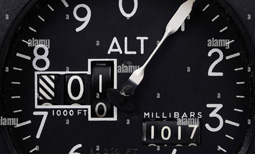 |
| Krueger Flaps | Krueger flaps are lift-enhancing leading-edge devices used on aircraft wings to improve low-speed performance during takeoff and landing. They increase lift by extending downward, altering airflow over the wing, and reducing stall speeds, commonly found on commercial and transport aircraft. |  |
| Kuwait Airways (National Carrier) | Kuwait Airways is the national airline of Kuwait, operating domestic and international flights. It is known for its fleet modernization, adherence to strict safety protocols, and contribution to Middle Eastern aviation development. |  |
| Kuwait Flight Information Region (KFIR) | The Kuwait Flight Information Region is the designated airspace managed by Kuwait’s aviation authorities. It controls air traffic flow, ensures safe operations, and coordinates with neighboring countries for regional flight management. |  |
